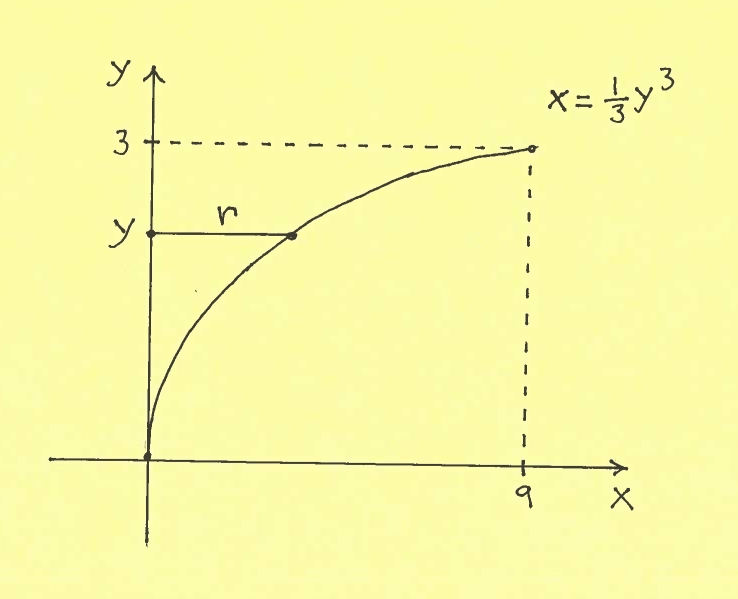Solution 2: Here is a carefully labeled sketch of the graph with a radius $r$ marked together with $y$ on the $y$-axis.

Thus the total Area of this Surface of Revolution is
$$ Surface \ Area = 2 \pi \int_{0}^{3} (radius) \sqrt{ 1 + \Big({dx \over dy}\Big)^2 } \ dy $$
$$ = 2 \pi \int_{0}^{3} ((1/3)y^{3}) \sqrt{ 1 + ((1/3)(3)y^{2})^2 } \ dy $$
$$ = 2 \pi {1 \over 3} \int_{0}^{3} y^{3} \ \sqrt{ 1 + y^{4} } \ dy $$
$$ = {2 \pi \over 3} \Big( \ {2 \over 3} {1 \over 4} (1 + y^4)^{3/2} \Big|_{0}^{3} \ \Big) $$
$$ = {2 \pi \over 3} \Big( \ {1 \over 6} (1 + y^4)^{3/2} \Big|_{0}^{3} \ \Big) $$
$$ = {2 \pi \over 3}{1 \over 6} \Big( \ (1 + y^4)^{3/2} \Big|_{0}^{3} \ \Big) $$
$$ = {2 \pi \over 3}{1 \over 6} \Big( \ (1 + y^4)^{3/2} \Big|_{0}^{3} \ \Big) $$
$$ = { \pi \over 9} \Big( \ (1 + (3)^4)^{3/2} - (1 + (0)^4)^{3/2} \ \Big) $$
$$ = { \pi \over 9} \Big( \ (82)^{3/2} - (1)^{3/2} \ \Big) $$
$$ = { \pi \over 9} \Big( \ (82)^{3/2} - 1 \ \Big) $$
Click HERE to return to the list of problems.

